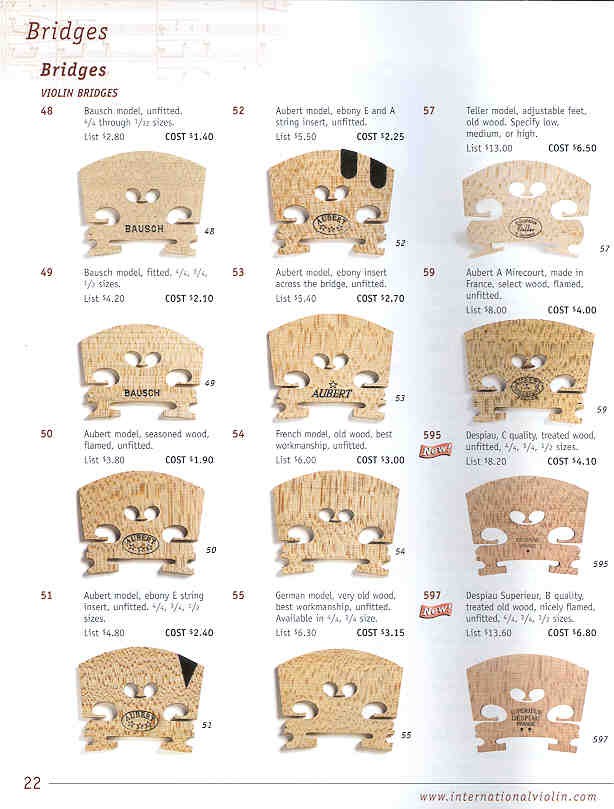The double bass is a fairly recent instrument but it has a long history of antecedents going back to Africa and Central Asia where the original stringed instruments were hunters’ and warriors’ bows being plucked during ceremonies. To make them louder, the bows were rested on tortoise shells or large gourds (although they often used their mouths as chambers as many tribesmen still do). Eventually, the bows were permanently attached to the shell or gourd. Of course, this bow was no use in hunting or warfare and so became a strictly ceremonial bow to be brought out and played only during the ceremonies and hence a reverence was attached to this ceremonial bow and the first stringed instrument was born.

Eventually, the ceremonial musical bow acquired extra strings and larger resonance chambers. The bows were first plucked with the fingers but then running another bow against it string-to-string at right angles to get a sustained tone rather than just a quick one became the forerunner of the viols and violins although does not appear to have happened in Africa but on the Asian continent. Even today, we call the implement that we draw across the strings a bow—because that is what it once was. Even the pouch attached to the bass tailpiece that one places the bow in when not in use is called a quiver.

Bowstrings were made from sheep intestines in Central Asia while the strings of the double bass were also originally made from sheep intestines and called “gut strings.” Further evidence of the connection between stringed instruments and hunting bows is that the “ribbon” of the violin bow is made from the hairs of a stallion’s tail. This indicates that bows were originally made by tribes that had access to horses of some kind. Central Asians were tremendous horsemen. In Africa, there are a number of native horses other than the zebra that came from the Arabs and the Barbs. Also the rosin used on the bow hairs to make them grip the string is also used on the Central Asian hunter’s bowstrings to preserve them and is mixed with beeswax and worked into the bow itself as a preservative just as rosin is mixed with drying oil and solvent and used to varnish the bodies of violins to preserve them.
The oldest bowed instrument is believed to have originated about 6000 years ago in Sri Lanka during the Hela civilization under the rule of King Ravan (there is a lot of debate today as to whether the island of Sri Lanka was meant or a region of western India). Named after Ravan, the instrument is now known as the ravanahatha or ravanahatta. The -hatha (-hatta) suffix means something that is played with the hands. The resonance chamber was made from a coconut shell or gourd with a diaphragm of animal skin upon which is mounted a bridge. The tubular neck or dandi is made from bamboo. There are a number of metal sympathetic strings (up to 13) that are unbowed that pass up the dandi tube under the bridge and vibrate whenever the main string is played. There are two primary strings—one steel reference string and one bowed string made from horsehair which passes over the bridge (the reference string does not). The horsehair string is the only playable string. The bow is also horsehair.

Bowed instruments enjoyed a burst of popularity about the 10th century in Central Asia into China along the Silk Road and the first bowed instrument of Central Asia may have been invented by the Kazakhs and called a kylkobyz. Whether any of the Central Asian bowed instruments were inspired by the ravanahatta is not known but, by 1000 CE, bowed instruments were found from North Africa to all the way to the Korean peninsula. Below, a kylkobyz (the word "kyl" means "horse's tail"):

The nomads of Central Asia strung their bows with sheep gut—one of the reasons they herded sheep—and the earliest violins were strung with sheep gut also (hence the term “gut strings”). To smooth the gut strings down, they rubbed them vigorously with braids of horsehair. In fact, among violinists and double bassists, gut strings are still often preferred to metal ones. So the connections are still there. Who was the first nomad to pluck a bow and who was the first to rub to bows against each other at right angles is, of course, unknown but eventually the one bow retained its shape while the other, having a gourd or coconut shell attached to it for amplification, became the instrument body.
Mongolian musician plays morin khuur of which the strings are made from horsehair—one string from a stallion’s tail (130 hairs) and the other a mare (105 hairs) and can be tuned fourths or fifths apart. The name “morin khuur” means “fiddle with a horse’s head” and is the official national instrument of Mongolia.

A closeup of the headstock of a morin khuur (below). If this does not drive home the connection of horses to bowed instruments, what does?

The kemenche or Arabic violin has silk strings played with a horsehair bow. The strings are usually metal today. It is sometimes called a “spiked fiddle” because of the spike protruding from the bottom of the resonance chamber (usually a gourd or coconut shell covered with goat or fish skin for a diaphragm). This instrument is found in variations from Europe (cello and double bass), across Asia and into Japan (the kokyu) and Indonesia (the rebab). The strings were likely originally horsehair but contact with the Chinese caused the Arabs to switch over to the more durable silk strings.




















 Linear Mode
Linear Mode
